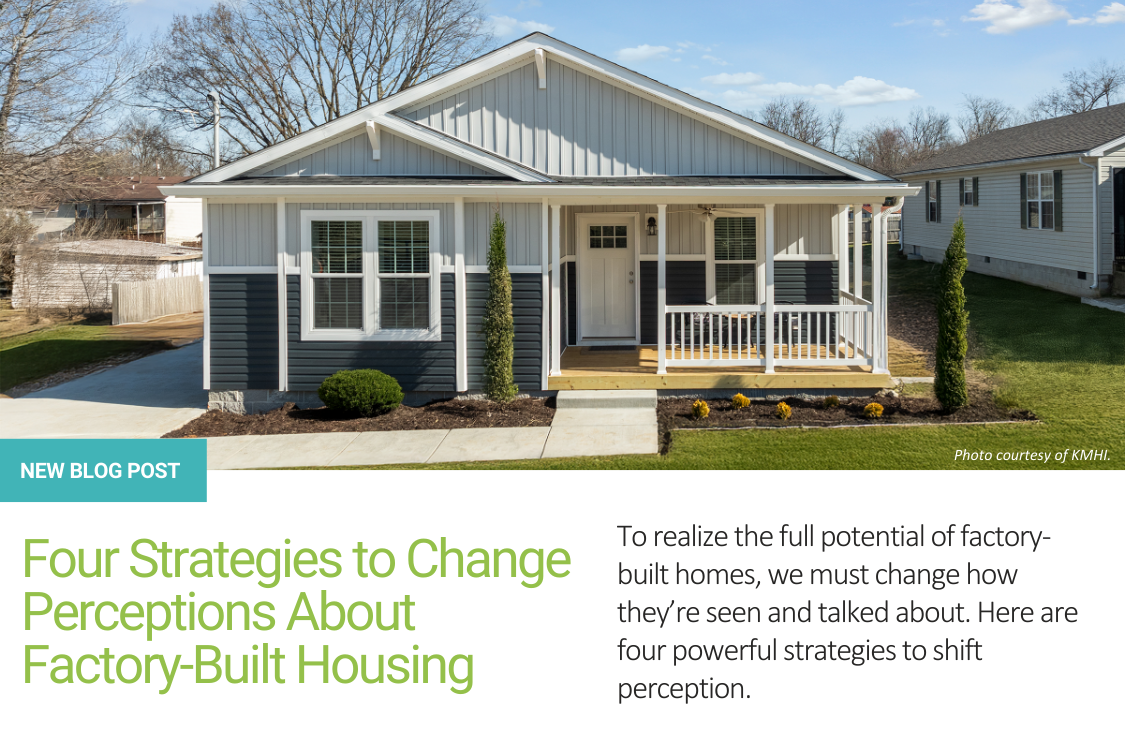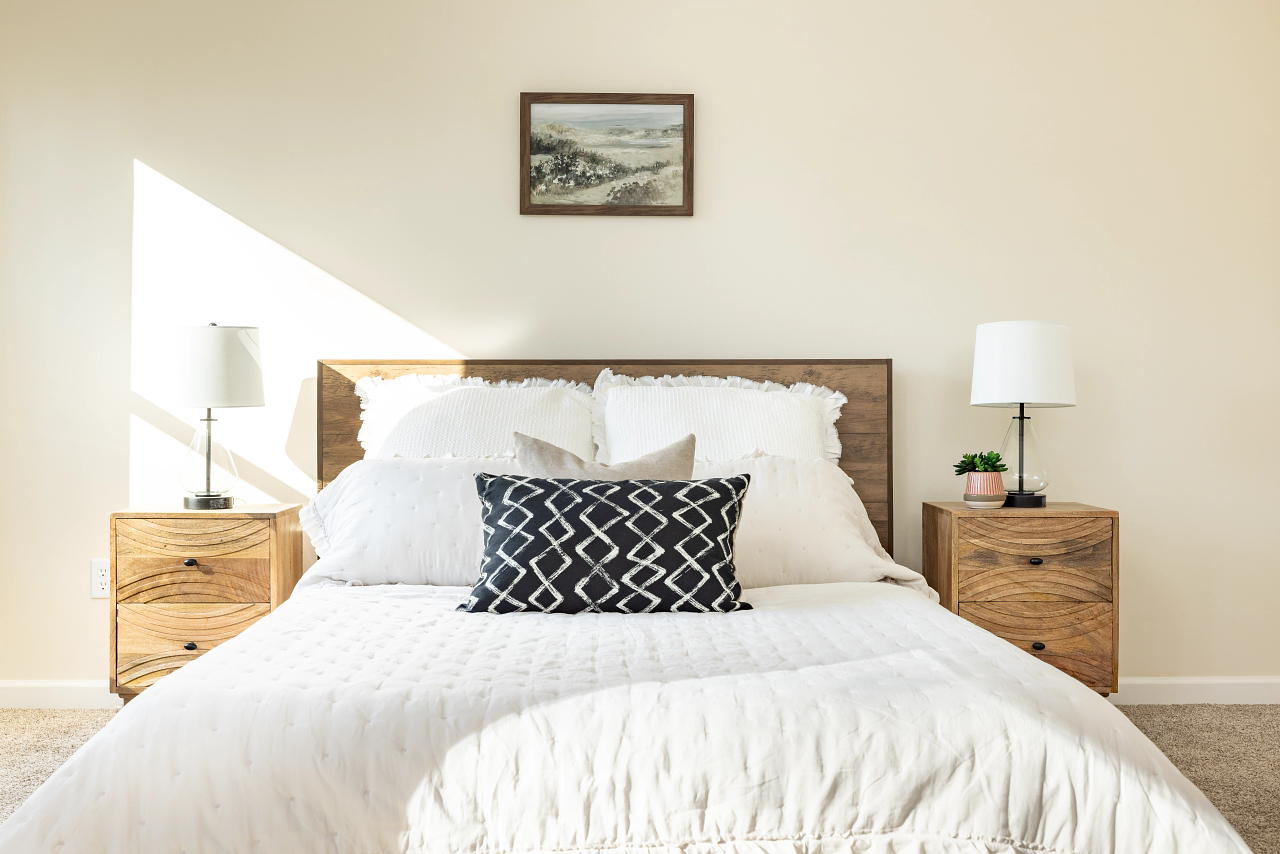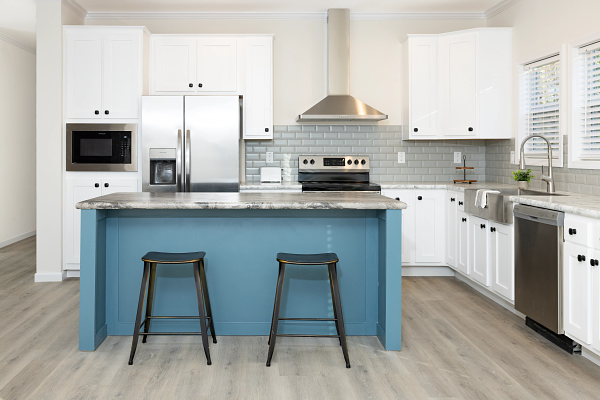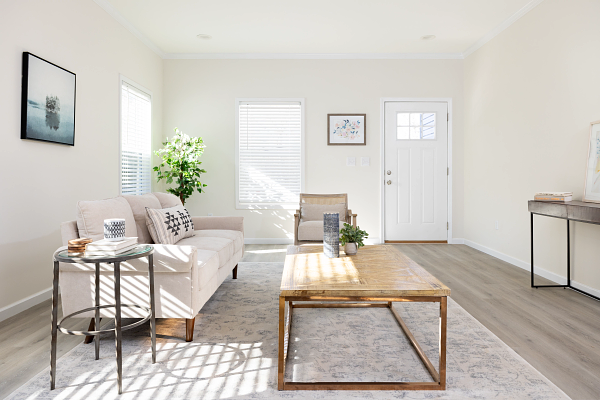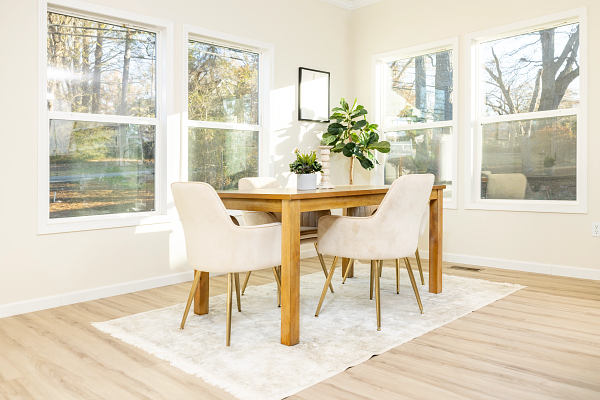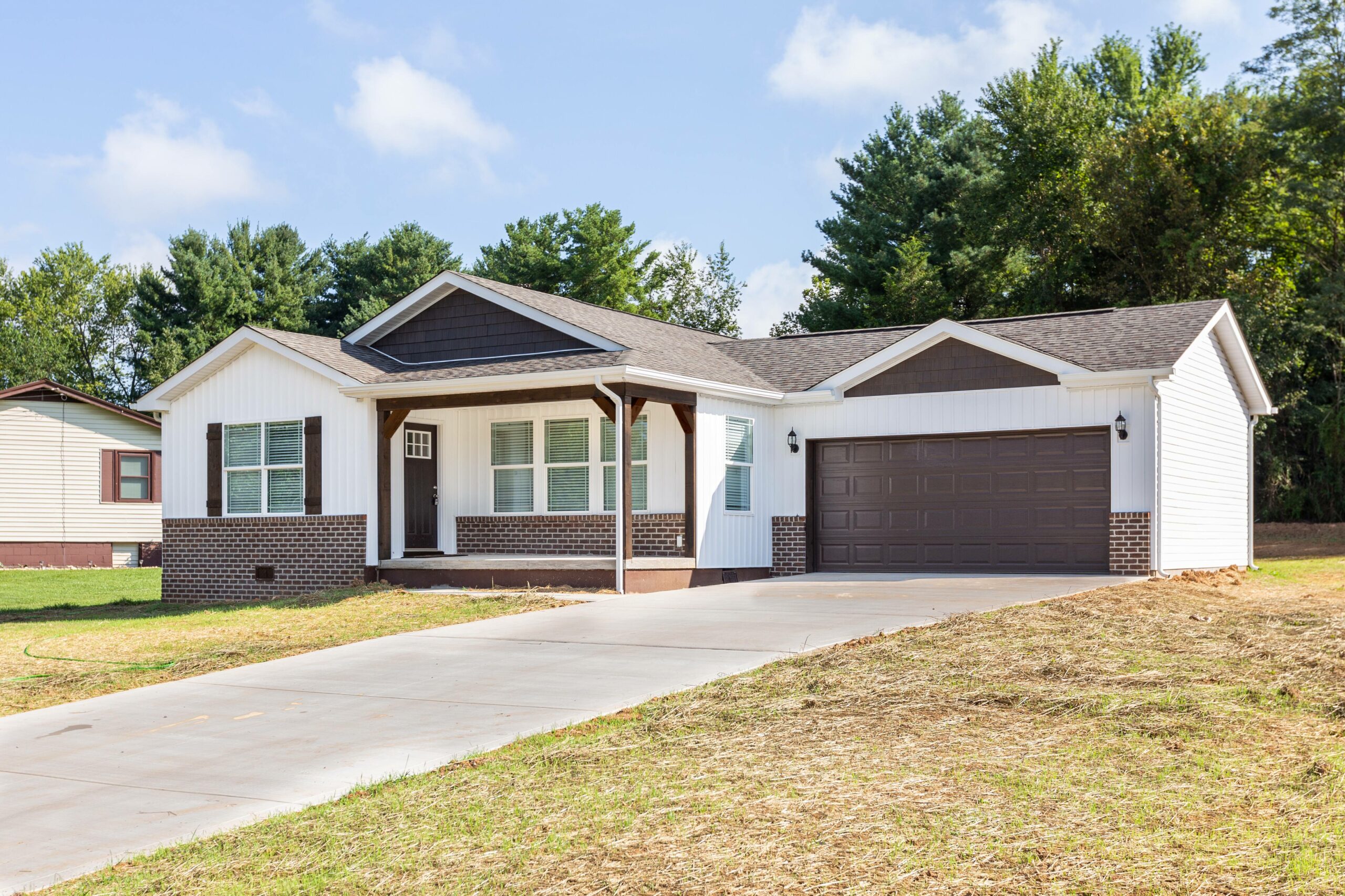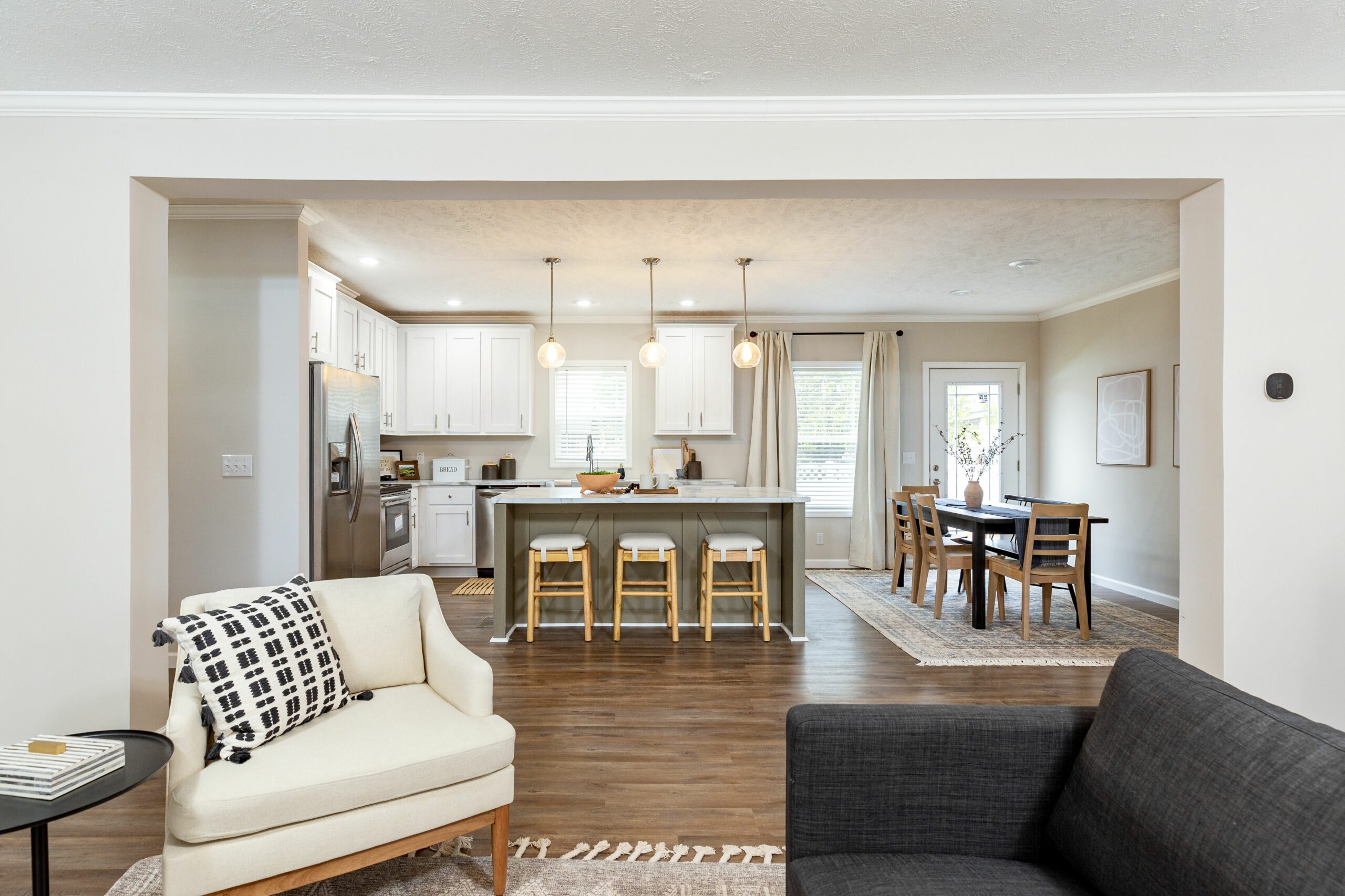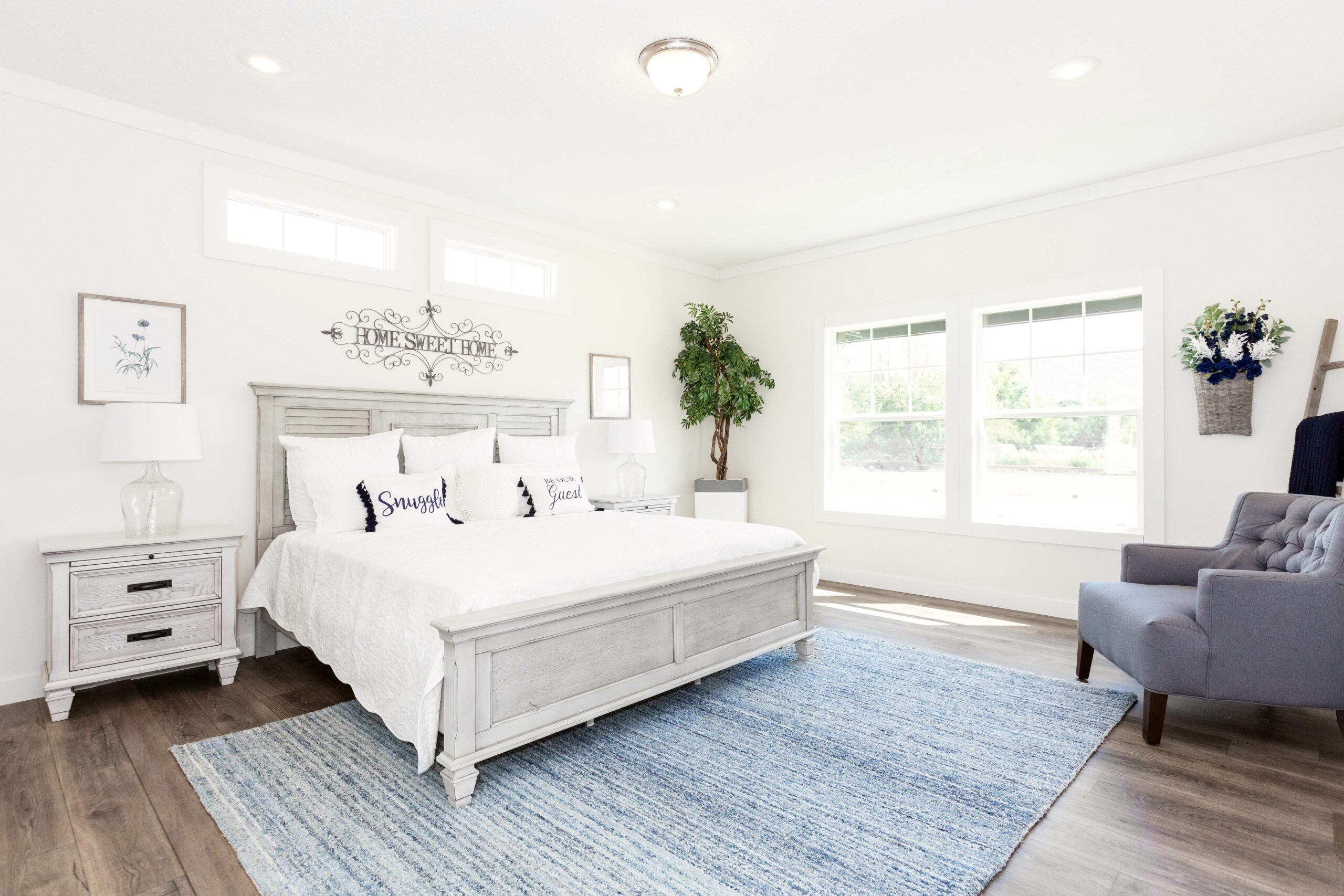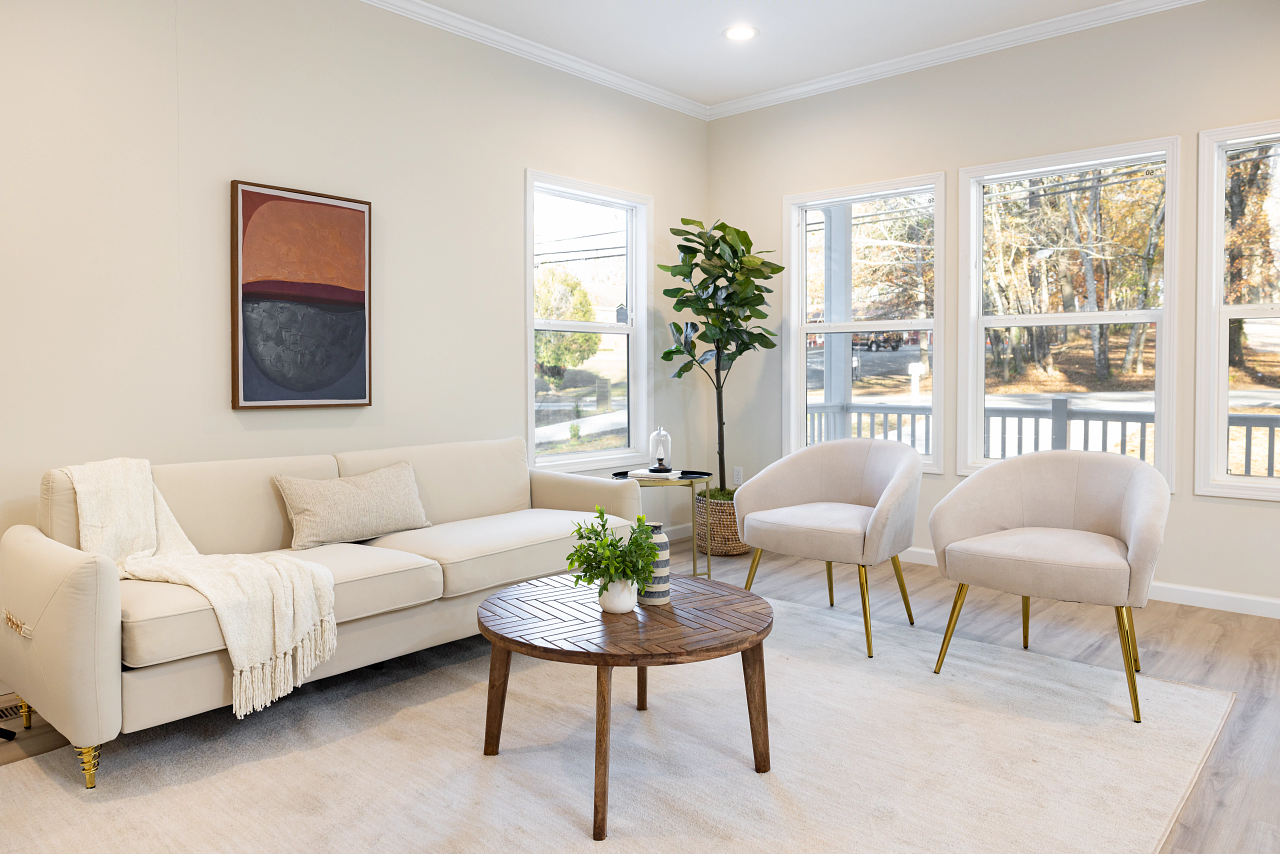Key Takeaways
- Factory-built homes are high-quality, energy-efficient, and affordable, but public stigma still limits their acceptance.
- Outdated language, media portrayals, and zoning laws continue to shape negative perceptions.
- Shifting the narrative requires updated terminology, real-life visuals, professional education, and local policy reform.
- Changing perception is key to unlocking scalable housing solutions for families and communities nationwide.
Introduction: Why Perception Matters
The U.S. needs more affordable homes, but too many people still write off factory-built housing based on outdated images of “trailers” and “mobile homes.” In reality, today’s factory-built homes are modern, high-performing, and built to last. Yet stigma continues to limit adoption, financing, and placement.
To realize the full potential of factory-built homes, we must change how they’re seen and talked about. Here are four powerful strategies to shift perception and why it matters.
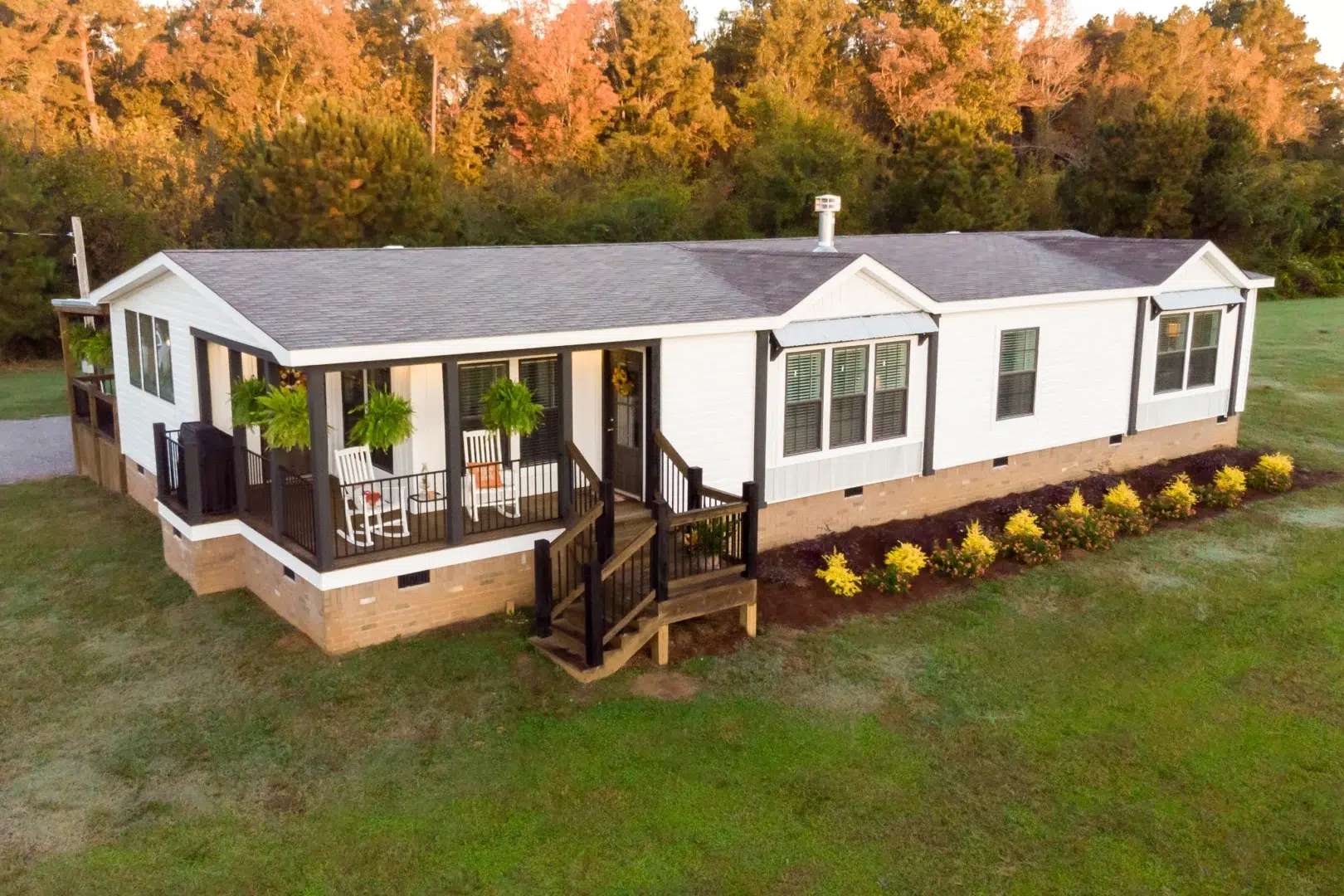
A History of Stigma
The roots of the stigma surrounding factory-built homes run deep. In the mid-20th century, mobile homes offered affordable housing but weren’t held to consistent construction or safety standards. As a result, many communities began excluding them through restrictive zoning, visual regulations, and financing limitations. “Trailer park” became shorthand for poverty and disinvestment, even though millions of Americans live in manufactured homes today.
Even now, many people assume factory-built homes are lower quality, poorly designed, or less valuable than site-built options. These perceptions influence policy, prevent homebuyers from considering these homes, and block developers from building them.
That’s why changing public perception isn’t just a PR effort, it’s essential housing policy.
- Use the Right Language
The words we use influence how people think. The term “mobile home” evokes outdated images, despite the fact that HUD-code homes haven’t been truly mobile since 1976. Today’s factory-built homes are built in controlled environments using high-quality materials, energy-efficient systems, and durable construction methods.
Using terms like factory-built housing, off-site construction, and precision-built homes reframes the conversation around innovation, not inferiority. Programs like MH Advantage® and CHOICEHome® even refer to factory-built homes designed for placement in traditional neighborhoods, proving these homes are more “mainstream” than many realize.
Encouraging housing professionals, policymakers, and the public to adopt accurate, respectful language is a foundational step toward reducing stigma and expanding acceptance.
- Share Real Stories & Visuals
Stigma thrives on misinformation, and nothing corrects that faster than showing the reality. Today’s factory-built homes offer attractive design, energy efficiency, and long-term value. But many people have never stepped inside one.
High-quality photos, virtual tours, and real homeowner testimonials are powerful tools. They help people envision factory-built homes in their own neighborhoods or see them as a real option.
For example, thousands of families served by the Next Step Network live in ENERGY STAR® certified homes with permanent foundations, open floor plans, and modern finishes. These stories counter stereotypes and build trust.
If a picture is worth a thousand words, a walkthrough of a modern factory-built home is worth a thousand changed minds.
- Educate & Engage Housing Professionals
Housing professionals play a critical role in what options buyers hear about, what gets built, and what gets financed. Yet many of these professionals – especially in real estate, lending, and housing counseling – have little training on modern factory-built homes.
Some aren’t aware of key features like energy certifications or appraisal guidance. Others still assume factory-built homes won’t appreciate or that they can’t be placed in desirable neighborhoods.
This knowledge gap can unintentionally reinforce stigma.
Training, webinars, and easy-to-use resource guides can change that. Resources like The Housing Counselor’s Guide to Factory-Built Housing by Next Step are designed to give professionals the tools they need to accurately represent factory-built homes, recommend them with confidence, and guide buyers through the process.
When professionals are informed and engaged, perception shifts from the inside out.
- Reform Zoning & Local Policy
Zoning codes are one of the biggest contributors to ongoing stigma. Many communities still have laws that explicitly exclude HUD-code homes or require factory-built homes to meet different (and often discriminatory) design standards.
These restrictions are often based on appearance, not performance, sending a clear signal that factory-built homes “don’t belong.”
Updating zoning and permitting processes is essential. Communities can:
- Remove blanket bans on factory-built homes.
- Allow HUD-code homes in residential zones by right.
- Focus on objective quality standards, not construction method.
- Incentivize energy-efficient, permanently sited factory-built homes.
State and local leaders can lead the way by integrating factory-built housing into broader affordable housing strategies. When policies change, public perception often follows.
Conclusion: From Stigma to Solution
Factory-built housing has evolved. It’s time for public perception to catch up. These homes are helping families build equity, lower energy bills, and access safe, affordable homeownership in communities nationwide.
Changing how people talk and think about factory-built homes isn’t just good messaging; it’s a necessary step toward a more inclusive housing system.
If you want to help:
- Share this post with colleagues, clients, or local officials.
- Tour a factory-built home in your area.
- Ask your community leaders to review zoning laws and housing policies.
The solution to our housing crisis might already be here – we just have to see it differently.
